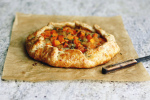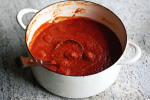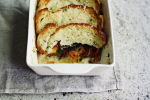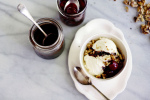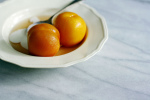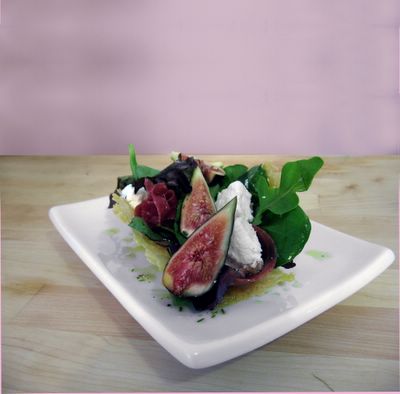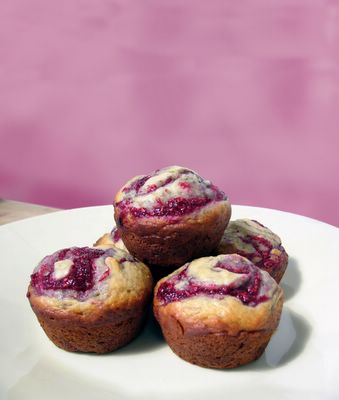
I must admit, I’m feeling a bit burnt out.
Since the aforementioned conference ended Saturday afternoon, I’ve been in a waking-comatose state. It seems a few days of information-laden presentations, politicking, and incessant schedules, all topped off by being away from one’s own bed, takes a toll.
Truthfully, it made me a tad bit batty. In all seriousness, since my return I’ve done nothing of note. I’ve pottered around the house, did a bit of cooking, some cleaning and organizing, but no major projects, nothing truly productive, and I couldn’t be happier.
Being away made me realize how much I love my home and my city. Absence makes the heart grow fonder and all of that, but I hadn’t realized how much I identify myself with my surroundings until this little sojourn. I am truly a homebody, and happy to admit it. While I love travel, I long for home.
Chubby Hubby has been asking the foods we’d travel the world for – and I could immediately volunteer a list of dishes. A slice of pizza from Lachine Arena Pizza in Lachine, the sweet potato and blue cheese fritters (no longer on the menu) at the Raincity Grill in Vancouver, the gravlax from Le Sélect in Toronto or a thali meal at Dasaprakash Hotel in Ooty.
With so much great food writing around, there is also an ever-lengthening list of places I would travel to try the food – places I’ve never been, and those to be revisited, with the hopes of following up on the fabulous food recommendations I read daily. In addition, there are specific home cooks for whom I would travel the globe, just to taste their creations (I’m ready to head to Heidelberg, Michele).
However, there are also meals I would come home for; anything cooked by members of my family, the roast beef sandwiches from our local German delicatessen, the homemade burgers from our “regular” pub, the ginger salad dressing from the sushi place in the city I grew up in … I could go on for days. These are the dishes I obsess over when I’m away – nothing tastes as good, nothing could satiate that yearning, but being home.
Case in point, my single-mindedness entertained a colleague at the conference – she, by the way, is a great girl and one of the nicest people I’ve met in our industry. One evening, on the way to dinner, I spontaneously started babbling about asparagus soup.
Not just any asparagus soup, but specifically the asparagus soup that was currently sitting in my freezer back home. I hadn't wanted to leave the asparagus in my fridge for the duration of my trip, and since I'd made this realization long after dinner, I made a batch of soup and froze it.
For the entire elevator ride I was detailing this soup, extolling its texture, its freshness, its absolute green colour; I was in a state. At dinner, fate would have it that there was asparagus soup on the menu. Yet, I eschewed the idea of ordering it, lest it taint (or overshadow) my thoughts of my soup at home. Clearly I was fixated. Luckily, my colleague found it more amusing than manic.
As you can assume, it was one of the first things I crammed into my greedy little mouth upon arriving back home. Next time, I’ll just bring a thermos.
Roasted asparagus soup
Inspired by a recipe by Roland Passot of La Folie on Epicurious, but it seems to be no longer available - this is my version..
Ingredients
1 lb. asparagus
Approximately 2 teaspoons olive oil
Salt and freshly ground pepper, to taste
2-3 tablespoons unsalted butter
2 shallots, minced
3/4 cup table (18%) cream
1 1/4 cup chicken stock
2 cups firmly packed chopped spinach (or one package frozen, chopped spinach, defrosted)
Preheat oven to 230°C (450°F).
Snap off ends of spears at natural breaking point, discard. On a rimmed baking sheet, toss asparagus with olive oil, salt and pepper. Roast in oven for about 6-8 minutes, until the asparagus starts to turn a bright green. Shake the pan to turn the asparagus, roast for another 4 minutes or so. The asparagus should be just starting to blister in places. When cool enough to handle, chop the asparagus into 2 inch lengths.
In a saucepan over medium heat, melt the butter. When the butter just begins to foam, add the shallots and sauté until translucent and softened. Add the chopped asparagus and cook, stirring occasionally, for about five minutes. Stir in the cream and stock, and bring to a boil. Cook for 5 minutes. Stir in chopped spinach, cook for 2 minutes more.
Transfer to the soup to a blender (working in batches if necessary), and purée until smooth. For a velvety texture, pass the soup through a fine-meshed sieve or chinois. You may skip this step if you’d like. Adjust seasonings to taste.
Serves two generously, can be served hot or cold.
Notes
• Instead of roasting, you could simply blanch the asparagus before sautéing.
• I've also made this soup with 1 cup 18% and 1 cup stock, just because the store sells the cream in 250ml/1 cup containers. This soup can be made with heavy cream instead, if you want a more luxurious version. When I want a “lighter” version, I substitute 1/4 cup of 2% milk and use only 1/2 cup of the 18% cream.
• If you use the frozen spinach, the soup will have a much more pronounced spinach flavour.
•This soup is lovely with a variety of garnishes — some options include; a seared scallop, crab, sautéed wild mushrooms with balsamic, chili oil drizzled popcorn (trust me), or use the same ingredients as in the panini to make a crostini to float on top.
Goat’s cheese and prosciuitto panini
My own creation, but really, it’s a grilled cheese sandwich.
Ingredients
2 slices prosciutto
1 teaspoon butter
1 teaspoon olive oil
4 thick slices of baguette, or your favourite bread
4 ounces herbed chèvre
Handful of baby greens
In a dry pan over medium heat, fry prosciutto until starting to crisp. Remove from pan, and drain on paper towels.
In the same pan, melt butter and olive oil.
Spread the chèvre over two slices of bread, top with prosciutto. Place remaining slices of bread on top. Grill sandwich in pan, pressing down with either a panini weight or with back of spatula. Cook for approximately 4 minutes on each side, or until bread is toasted and the chèvre is beginning to soften. Remove from heat, drain on paper towels if there is excess oil.
Open sandwiches and tuck in greens. Makes two.
 Thursday, May 26, 2005 at 7:55PM
Thursday, May 26, 2005 at 7:55PM 

